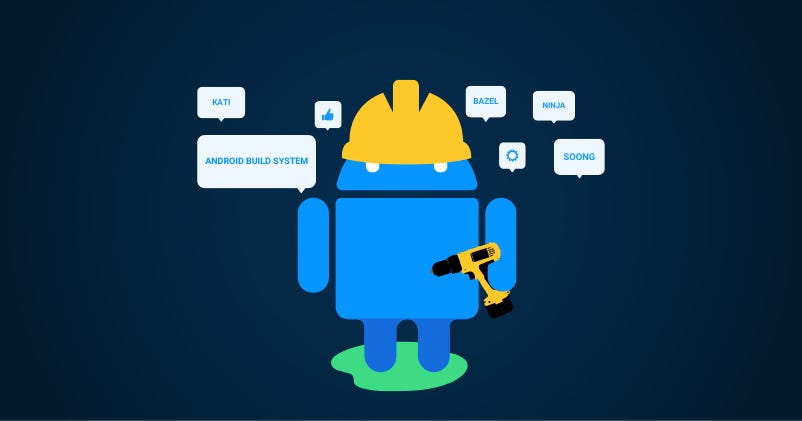Monorepo vs. Build System vs. Build System Orchestrator: Understanding the Differences
 NiKHIL NAIR
NiKHIL NAIR
In modern software development, maintaining efficiency, collaboration, and scalability is crucial. As teams grow and projects become more complex, developers increasingly rely on tools like monorepos, build systems, and build system orchestrators. While these terms are often used interchangeably, they each serve distinct purposes. Understanding the differences between them can significantly impact your development workflow, especially in large projects.
In this blog post, we’ll explore these concepts, how they differ, and when to use each in your projects.
1. Monorepo
What Is a Monorepo?
A monorepo (short for monolithic repository) is a version control strategy where multiple projects or codebases reside in a single repository. This contrasts with polyrepo setups, where each project has its own isolated repository.
Key Benefits:
Unified versioning: All projects share the same version control, making it easier to track changes.
Code reuse: Shared code between projects (like common libraries) doesn’t need to be replicated, reducing redundancy.
Improved collaboration: Developers working across teams can work within the same repo, simplifying coordination.
Atomic commits: Developers can make changes across multiple projects in a single commit, ensuring consistency.
Challenges:
Scalability: As the repository grows, tools like Git can struggle with performance.
Tooling: Monorepos require specialized tooling to manage dependencies, build processes, and test suites for multiple projects efficiently.
Example:
Google famously uses a monorepo to manage the source code for a vast number of services and applications.
2. Build System
What Is a Build System?
A build system is a tool designed to automate the process of converting source code into an executable program. It handles the compilation, linking, and packaging of code, ensuring that your application is in a runnable state. Build systems also automate tasks like running tests, generating documentation, or handling dependencies.
Common Build Systems:
Make: One of the oldest and most well-known build systems, often used in C/C++ projects.
Gradle: A flexible build system for Java, Android, and other JVM-based languages.
Webpack: A popular build system for bundling JavaScript applications.
Key Benefits:
Automation: Build systems eliminate the need for manual compilation and bundling tasks.
Consistency: Ensures that every developer or CI environment can reproduce the same build results.
Optimization: Many build systems include optimization techniques, such as tree-shaking, code-splitting, and minification, to improve performance.
Challenges:
Configuration complexity: Some build systems (like Webpack) can require intricate configurations, making initial setup and debugging challenging.
Speed: On large projects, build systems can slow down as they recompile large codebases unless optimized for incremental builds.
Example:
Webpack bundles JavaScript files and assets, while tools like Gradle or Maven automate builds in Java projects.
3. Build System Orchestrator
What Is a Build System Orchestrator?
A build system orchestrator manages and coordinates multiple build systems, especially in large-scale monorepos. It organizes the dependencies between packages and projects within the repository, ensuring that the right components are built and tested in the correct order, only when necessary.
Unlike traditional build systems, an orchestrator doesn't necessarily compile or package code. Instead, it focuses on optimizing the entire workflow, ensuring that only the affected packages are built and managing parallelization, caching, and incremental builds to minimize unnecessary work.
Key Benefits:
Optimized builds: Orchestrators use techniques like dependency graphs to only rebuild affected parts of the project, dramatically reducing build times.
Parallelism: They can build multiple projects simultaneously, maximizing resource usage.
Cache management: Many orchestrators, such as Turborepo or Nx, offer smart caching to prevent redoing identical build steps.
Task coordination: They handle complex workflows by coordinating tasks like building, testing, and linting across multiple projects.
Challenges:
Learning curve: These tools often come with their own concepts and configurations that require time to understand and integrate.
Additional tooling: For teams unfamiliar with orchestrators, this introduces another tool to maintain and manage.
Example:
Turborepo and Nx are popular build system orchestrators that manage monorepos, efficiently handling dependencies and optimizing builds.
Monorepo vs. Build System vs. Build System Orchestrator
While each of these concepts plays a vital role in development, they address different aspects of the build and workflow process.
A monorepo is a strategy for organizing your codebase.
A build system automates the process of converting your code into an executable form.
A build system orchestrator optimizes the build process across large codebases, especially in monorepos.
In essence, a monorepo is the structure, a build system is the engine that processes your code, and a build system orchestrator is the conductor that ensures all parts of your project are built and tested efficiently.
When Should You Use Each?
Monorepo: Use this approach when your projects share a significant amount of code or when multiple teams need to work in close coordination. However, ensure you have the right tooling in place to manage it effectively.
Build System: Every project needs a build system, regardless of repo structure. Select a build system that works best for your project's language and architecture.
Build System Orchestrator: When working with a large monorepo with multiple interdependent projects, consider adding an orchestrator to optimize builds, testing, and deployments. This is especially useful when your repo grows beyond the point where a traditional build system becomes a bottleneck.
Conclusion
As projects grow and evolve, developers need tools that can scale with them. Monorepos, build systems, and build system orchestrators all have their place in modern development workflows. By understanding the differences and use cases for each, you can optimize your team's efficiency and ensure that your build processes are fast, scalable, and reliable.
In the ever-evolving landscape of software development, knowing how to leverage these tools can make all the difference in delivering projects faster and more effectively.
Subscribe to my newsletter
Read articles from NiKHIL NAIR directly inside your inbox. Subscribe to the newsletter, and don't miss out.
Written by
